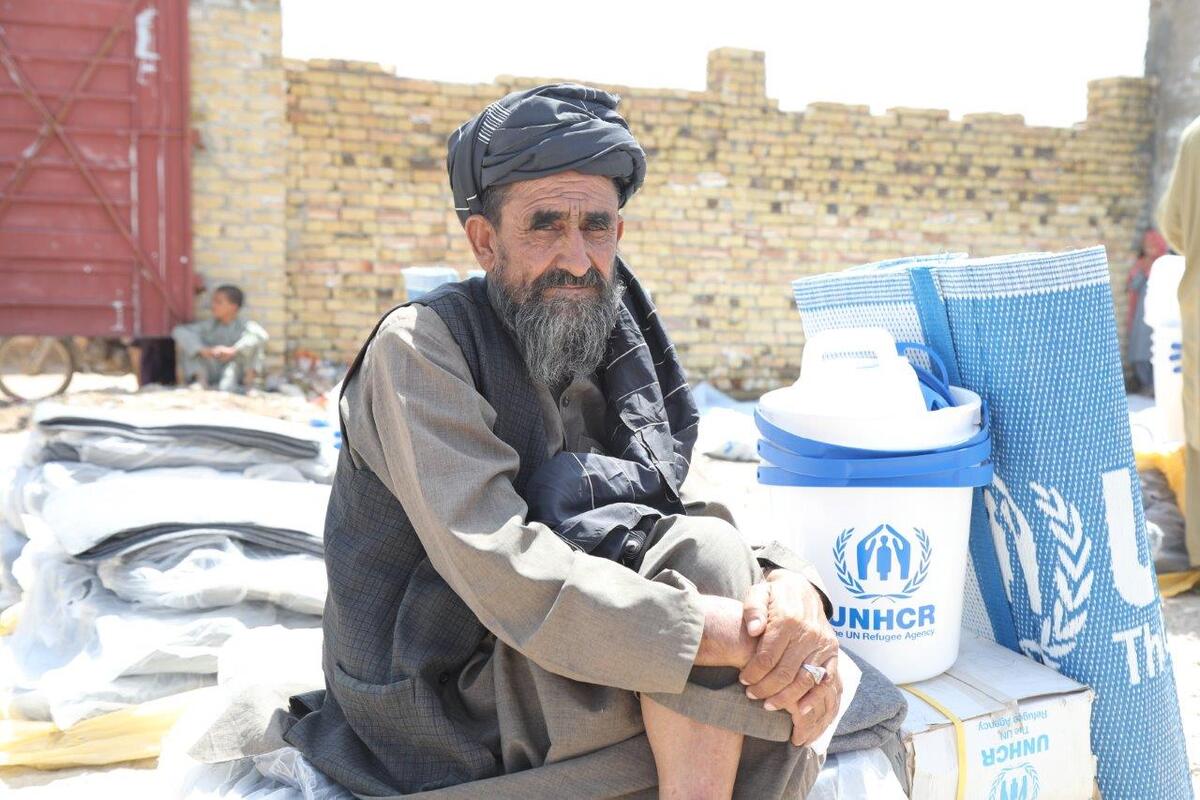UNHCR tailoring shelter solutions to meet Aceh needs
UNHCR tailoring shelter solutions to meet Aceh needs

GENEVA, Feb 4 (UNHCR) - UNHCR is tailoring shelter solutions to meet the different circumstances of tsunami victims in Indonesia's Aceh province. The main aim is to get people back into their own homes as soon as possible by rebuilding, extending or constructing new homes. Consultations with the displaced people on what they want and where they want to live are of prime importance.
"The displaced are in different situations and locations. Some are staying with relatives, some have houses that can be repaired, and others have homes and land that have been washed away. Trying to respond to all these various sets of needs is the challenge," UNHCR's Asia Pacific bureau director Janet Lim said Friday in Geneva after a mission to the tsunami-affected region. "The refugee agency's response must be appropriate to the needs of the displaced," Lim added.
At Kreung Sabe on Aceh's devastated west coast 8 km south of Calang, UNHCR is involved in a pilot project with the government and other agencies, to respond to the recovery needs of the local population. The fishing village was totally destroyed by the December 26 tsunami and earthquake, with an estimated 50 percent of the population swept away, leaving 4,000 people displaced. But fisher families that survived the giant waves are intent on restarting their lives in the same place. They have made it clear the village is their home territory, they know the land and the sea, and they definitely do not want to relocate.
"The villagers keep talking about ground zero - they are determined to go back and rebuild as soon as possible and they don't want to go into camps," said Lim.
Respecting the villagers' wishes, the proposed rebuilding plan will take into account permanent shelter but also essential community infrastructures such as mosques, health, water, sanitation and education facilities. Special attention will be given to the needs of vulnerable groups including separated children, single-parent families and the elderly. UNHCR has sent a senior physical planner to the village to help with site design.
"If this works as well as we hope, then it's something we could replicate in other places along the west coast, if it suits the needs of the population," Lim said.
As the project is still in its infancy, UNHCR erected some 500 tents over the last week in Kreung Sabe as temporary housing for the displaced while they get on with rebuilding their lives. The agency has ferried in 7.5 tonnes of relief supplies into Kreung Sabe using Super Puma helicopters, generously provided by the Swiss government.
While rebuilding plans are going ahead in some towns, other isolated areas of the west coast, such as Keude Panga 20 km south of UNHCR's operational base in Calang, have received little relief aid and still need emergency help. During the week the Swiss helicopters airlifted in eight tonnes of relief supplies including tents, blankets, kitchen sets and mattresses for an estimated 2,000 displaced people. The village is cut is cut off from the towns of Calang and Meulaboh because of destroyed bridges and roads.
In Meulaboh, further down the coast, to get displaced people out of often squalid surroundings in temporary shelters, the refugee agency is designing and building tented camps to be run by Indonesian civilian authorities. UNHCR is expanding the recently opened Lehan camp site (Perum Nas Lapang) which was designed to accommodate 112 families comfortably in accordance with international standards. However, the Indonesian authorities moved into the camp a total of 135 families previously staying with host families. In order to accommodate the extra families, UNHCR is working to expand the site for an additional 56 tents. UNHCR, which has been working closely with the Indonesian authorities on shelter, has advised the government to respect the population capacity limits of the camp design.
There is still not a complete picture of the total shelter needs on the west coast, but the refugee agency - which is, unusually, involved in this natural disaster relief operation at the request of the UN Secretary-General - is focusing on providing shelter solutions appropriate to the needs of the local population.









